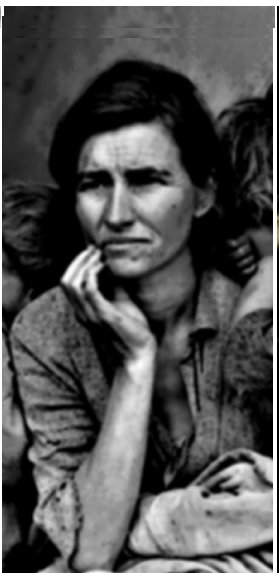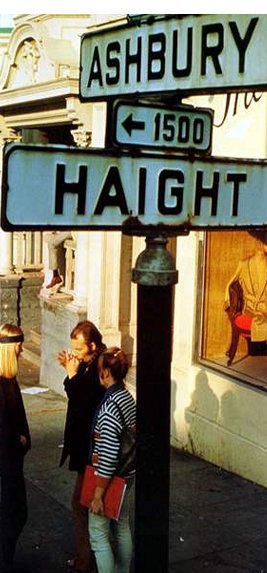The Golden Melting pot Jennie Lee
Susan Lee Johnson is currently a professor of history and Chicana/o and Latina/o Studies at the University of
Wisconsin-Madison. Previously, she has taught at the University
of Colorado at Boulder,
the University of California,
Los Angeles, and the University
of Michigan. Johnson
has received her B.A. from Carthage College, her M.A. from Arizona State
University, and her Ph.D. from Yale University.
The historian has also published articles on Western and women¡¦s history.
Susan Lee Johnson is currently a
professor of history and Chicano and Latino Studies at the University of
Wisconsin-Madison. Previously, she has taught at the University
of Colorado at Boulder,
the University of California,
Los Angeles, and the University
of Michigan. Johnson has received
her B.A. from Carthage College,
her M.A. from Arizona State
University, and her Ph.D. from Yale
University. The historian has also
published articles on Western and women¡¦s history.
Jennie Lee is on the student
officer board of Irvine High
School¡¦s National Honor Society Club. She also
plays tennis for her school¡¦s girls¡¦ varsity team. During her free time, Jennie
enjoys reading, shopping, and watching both new and old-time movies.
The United
States has always been thought of as the ¡§Melting
Pot¡¨ of the world, but one of the nation¡¦s ¡§most multiracial, multiethnic,
multinational events¡¨ is undoubtedly the California Gold Rush of 1849.1 With
the discovery of gold, miners from all over the globe traveled to the ¡§diggings¡¨
where they sought their fortune. Susan Lee Johnson¡¦s book, Roaring Camp: The Social World of the California Gold Rush, shows how
the encounters and exchanges between Anglo American, African American, Miwok Indian, Mexican, Chilean, French, and Chinese miners
changed the history of California
and the entire country. Johnson is ¡§concerned both with what happened in California
after 1848 and with what the gold rush has come to mean.¡¨2 The unexpected
confrontations left behind footprints of a legacy that continue to be
remembered today. More so than the Northern Mines, the Southern Mines at the
foot of the Sierra Nevada Mountains,
near the San Joaquin River,
came to encompass a uniquely diverse social community. The gold rush caused the
miners in this region to question established social standards and gender roles
in their efforts to create a new society out of chaos.
In the prologue, Johnson provides a
captivating narrative of a legendary Mexican bandit named Joaquín
Murrieta and his fate in the events of the gold rush. Through Murrieta¡¦s story
of revenge against the white miners, the author presents the injustices
Mexicans (and other foreigners) faced in the unfairly Anglo-dominated land. She
allows for Murrieta¡¦s traditionally unheard voice to divulge the truth about
prejudice in the mines. The fate of
Joaquín is still unknown, but he serves as a champion
of justice for the underdogs. Lewis continues in Chapter One¡Xtitled ¡§On the Eve
of Emigration¡¨¡Xwith background information about the various ethnic groups,
especially ¡§the momentous local and global forces that worked together to bring
sixty or seventy thousand immigrants in less than a decade.¡¨3 Whether it be the slave holder from Mississippi,
the dutiful son from South China, or the prostitute from
France, all of
the immigrants¡¦ motives were the same: they sought wealth that their homeland
could not provide. Johnson also claims how the sudden influx of people
disturbed the native Miwok population in California.
The gold rush forced the Miwoks to take refuge in the
cold mountains, where the women had trouble giving successful births. With the
newly built dams that waylaid the salmon, the Indians had to gradually
supplement their customary ways of getting food with gold mining and increased
horse raiding in order to purchase nourishment. Johnson delineates the rapid
changes the natives faced in having to modify their habitat, their food
sources, and their perception of the world.
Next in Chapter Two, Johnson
elaborates on the chapter titled ¡§Domestic Life in the Diggings.¡¨ The author
gives details on the ¡§what¡¨ and ¡§how¡¨ of the miners¡¦ daily shelter, food, and
other basic necessities. She explains that many white miners paid non-Anglos,
such as African American and Chinese men, to provide sewing, cooking, and
laundry services. These ¡§novel divisions of labor could unsettle notions of
womanliness as well as manliness¡¨ in the diggings, which they often did.4
Nevertheless, some Anglo men chose to perform their own domestic duties, and
Johnson shows how these tasks proved a source of bonding between them as they
relied on each other for help. In Chapter Three, ¡§Bulls, Bears, and Dancing
Boys,¡¨ the author presents the miners¡¦ many forms of leisure. From Mexican
fandango houses to French saloons, the men enjoyed the freedom to have fun
without their wives. Johnson reveals how the miners, especially the Anglo
Americans, feared they would be tempted to sin beyond forgiveness. Moreover,
she elucidates upon the fact that popular gambling games and bull-and-bear
fights incited tension among the different mining groups. Every aspect of the
mines involved racial conflict because the Anglo American men strived to secure
¡§dominant positions in the emerging social order.¡¨5
Johnson goes on in Chapter Four, ¡§Mining
Gold and Making War,¡¨ to explain the series of mining-related racial ¡§wars¡¨
that occurred in the Southern Mines. After discoursing upon the Chilean War,
the ¡§French Revolution,¡¨ and the Mariposa War, she expects readers to see the
unfortunate pattern of the gold rush confrontations: although they were
numerically superior, the non-Anglos ¡§found that U.S.
whites were backed by an anti-Indian, antiforeign,
and antiblack state government.¡¨6 The
white men combated the other social groups more than just physically; they also
fought economically and ideologically. More and more, the emerging group of
middle-class Anglo Americans tried to take control. Furthermore, in Chapter
Five the author tells of the ¡§Dreams that Died.¡¨ She illustrates how other than
those few who were able to scream ¡§Eureka!,¡¨ most miners had their hopes crushed. Foreign miners
faced heavy discriminatory taxes of twenty dollars a month until those were
eventually lowered and ultimately abolished. Additionally, Johnson describes
how local water companies¡Xrun by white men¡Xvictimized their fellow Anglo peers
by charging unreasonable prices. These capitalistic entrepreneurs greatly
engendered hate from the poor individual miners who were at a loss when
business created monopolies in mining-related areas. She makes it clear that
many men had to return home with nothing but regret.
Johnson¡¦s final chapter, ¡§The Last
Fandango,¡¨ is about the end of the male-dominated gold rush community. The
author expands upon the notion that ¡§only when women joined [the] men in California
did a middle class begin to take root.¡¨7 Advocating the
elimination of gaming tables, brothels, and dancing halls called fandangos, these Anglo women were the push for reform that
allowed for the creation of a ¡§proper society.¡¨ The Anglo men did not consider
that the foreign women possessed the same maternal sense as their female
acquaintances had back home. Then again, Johnson creates a melancholy tone that
suggests that when their wives finally came, the men missed the initial gold
rush setting, and no longer wished for female companionship. Finally, in the
epilogue called ¡§Telling Tales,¡¨ Johnson ends with how Americans on the East
Coast reacted to the stories of the gold rush. Crime pamphlets circulated wild
stories about the mines, warning people of possible social dangers. Johnson
demonstrates that often times ¡§vigilance committees were more concerned with
punishing wrongs done to Anglo Americans than wrongs done by them, especially¡Kto
non-Anglo Americans.¡¨8 According to her, the popular stories
were largely fictionalized tales by white men. These reports are in part
responsible for current misconceptions about the ethical status of various
cultures.
Johnson¡¦s Roaring Camp
serves as a book of truth about the gold rush. In her writing Johnson hopes to
both ¡§interrogate¡¨ and ¡§dismantle¡¨ the Anglo-version stories of the gold rush,
and ¡§offer instead a pastiche of tales¡¨ that analyzes ¡§the conquest of history.¡¨9
She offers new insight as to the social aspects of the Gold Rush, as to
how the miners and other workers interacted with and influenced one another.
Recounting narratives of the non-Anglo populations, Johnson tries to have their
involvement remembered accurately. The book provides many perspectives to the
multi-faceted events of the Gold Rush. The author asserts that the history of
the gold rush is inadequate without the full coverage of ¡§minor¡¨ groups left
out in the shadow of the overpowering whites. As in the Chilean War of the
winter of 1849, accounts by Anglo men do not explicitly state that they antagonized
Chileans in an effort to exclude the foreigners because of their unfree-labor practices. The stories by white miners make
the Chileans the villains who started the hostile conflict. In reality, the
Chilean War was a ¡§Chilean Massacre¡¨ that resulted in the deaths of many
innocent Chilean miners who were simply first in the winter camping spot
coveted by the whites. Making an ethical argument that everyone needs to be
equally presented, she depicts how the different cultures socially intertwined.
As a Caucasian woman who was
educated in the United States,
Johnson grew up reading textbooks with a one-sided perspective. Like many other
students, she learned that the gold rush was ¡§an episode in a larger story
about westward expansion, Manifest Destiny, and the inevitable march of civilization.¡¨10
In Roaring Camp, the author claims that textbook recollections are
not the full story and that there is obviously more. She wants to know how the gold
rush ¡§has been construed more and more narrowly over time until it has come to
connote merely fast fortune.¡¨11 Johnson is a part of the New
Left school of historiography, and her writing reveals her modest liberalism.
New Leftists believe history has always been defined by struggle between
different economic and racial classes; they think history should be seen
through the masses, including all economic classes and ethnic groups.
Accordingly, Johnson stresses the need for the gold rush to be remembered as a heterosocial event. She sympathizes with the non-Anglo men
and women who suffered under the domination of the whites by utilizing an
especially compassionate tone in her writing. Johnson¡¦s book genuinely strives
to capture the essence of the diversity of the gold rush. Sharing the stories
of mistreated foreign (and native) peoples, the author implies that the gold
rush was another outlet of ethnocentrism and human cruelty in American history.
In her book review of Roaring
Camp, Elizabeth Jameson of the University
of Calgary praises Johnson¡¦s
writing. She applauds Johnson for using individuals¡¦ ¡§fragmented accounts¡Kin
triumphal nationalistic narratives to explore the construction of memory and history.¡¨12
Jameson enjoys hearing the various voices in the mines, from the Chilean
Vicente Pérez Rosales to the Chinese Fou Sin. Throughout the entire review Jameson has only good
things to say about the book; she commends its level of scholarly research, but
also its imaginative ability to knit multiple narratives into one history.
Likewise in her book review, Anne Hyde of Colorado
College celebrates Roaring Camp¡¦s success in ¡§achiev[ing] a ¡¥gold standard¡¦ by making something as familiar as
the gold rush uncomfortably new.¡¨13 The changing
concepts of race, gender, and class during the gold rush interest Hyde, and she
admits that Johnson has a skill in effectively describing them. However, the
reviewer points to one fault of Roaring Camp: Johnson ¡§occasionally overreach[es] [her] evidence¡¨ in
trying to ¡§recreate the ¡¥perverse paradise¡¦ of California
in 1849.¡¨14
Sometimes, even though multiple narratives explain one event, Johnson only
expands on those that support her argument in favor of the non-Anglo voices.
She too eagerly accepts the injustices minorities claim to have suffered from
whites to prove she is listening to their sides of the story. Hyde believes that at times Johnson goes
too far without enough facts to defend the minorities.
Jameson and Hyde¡¦s overall support
of Roaring Camp can easily be believed. With its numerous narratives of
gold rush individuals, the book presents history in a relatively entertaining
manner; the writing is somewhat lyrical and vivid with imagery. Johnson
effectively accomplishes her purpose of exposing alternate accounts of gold
rush events. Despite Hyde¡¦s claim that Johnson sometimes assumes without enough
proof, Johnson¡¦s argument still proves strong. The author knows that the
non-Anglo populations were vulnerable back then and continue to be now. Relying
on the power of memory, she perfectly utilizes many small stories into one
collective story of the previously unheard. The significance of Roaring Camp does in fact ¡§[extend] far beyond the
richly particular social world of the Southern Mines.¡¨15 Johnson¡¦s bigger picture
behind her history of the gold rush social world relates to this ability to
divulge the important unknown. Her point that it is necessary to embrace all viewpoints
is relevant to all subjects of history.
During the gold rush, California
came to reflect the eastern United States.
The new ¡§societies¡¨ created from mining towns were influenced by eastern
middle-class values. Anglo men in the diggings found that they could not
establish any sense of order without the presence of their female counterparts.
Once the Anglo women came, the men settled down and had families, aiding in the
growth of towns. In California,
the same wave of industrialism set in as it did in the East: buildings and
businesses soon sprang up like weeds. The Southern Mines were tied ¡§ever more
tightly to the political and economic capitals of Anglo America in the East.¡¨16
Communities accepted and ostracized people on all levels based on their
East Coast-related political and economic affiliations. From local government
officials to water company employees, people had to follow the social loyalty
and alliance codes in order to fit in with the crowd. In addition, the eastern
women who located to the West brought with them their social reformist ideas.
They came advocating temperance, abolition, and women¡¦s
rights. When they tried to close down the fandangos, saloons, and brothels,
they hosted community balls and parties as a substitute form of leisure. The
persevering ladies eventually met with complete success,
ridding the towns of blatant ¡§sinning,¡¨ and now California
somewhat mirrors the East.
In spite of these similarities, California
was unique in its development as a state resulting from an event as significant
as the gold rush. No other state experienced the social ordeals of the gold
rush, which occurred soon after the 1848 Treaty of Guadalupe Hidalgo ceded the
Mexican territory of California
to the United States.
The gold rush forced different ethnic crowds to confront each other in both
conflict and cooperation. What is more, the members of the predominantly male
immigrant population were obliged to undertake unfamiliar feminine jobs that
many of them were uncomfortable with. They experimented with domestic chores
that they once took for granted in being completed by the women. Similarly,
women in California broke out of
their orthodox gender roles when French, Mexican, and Chilean women who worked
in places of leisure ¡§constituted a newly sexualized, racialized,
and commercialized group of womanhood.¡¨17 The females no
longer remained in the stereotypical, weak position because they did not have
to depend on financial support from the men. In light of the gold rush, Johnson
views California as the first and
only state to have been established on such a socially diverse foundation. California¡¦s
social community is the predecessor of future multi-ethnic societies in the
other U.S.
states. Looking upon California¡¦s
history, citizens nationwide can consider the origins of the country¡¦s rich
spectrum of races.
The
gold rush was more than a field day for numerous miners who dreamed to ¡§strike
it rich.¡¨ It was a social opportunity, a mixing bowl that allowed for an
unprecedented combination of ethnic groups to interrelate. Roaring Camp is truly a provocative and enlightening
book that changes one¡¦s preconceived thoughts about the gold rush. With her
book as an example, Johnson insists that it is the responsibility of historians
to offer a voice to those whose histories need to be remembered. She leads a
new generation of historians who give revisionist views of America¡¦s
past. Also, the author urges her readers to take action. She wants them to
share with people today that we must ¡§recognize that we live in an era of
concentrated human diversity and congealed human inequity not wholly unlike
that faced by gold seekers a hundred and fifty years ago.¡¨18 Having spread her message,
Johnson contains hope for the future. Now the public needs to heed her advice
to avoid repeating the same mistakes of history. The sooner we accept
diversity, the sooner we can progress into a more unified society.
1. Johnson, Susan L. Roaring Camp: The Social World of the
California Gold
Rush. New York: W. W. Norton
& Company, 2000 12.
2. Johnson, Susan L. 26.
3. Johnson, Susan L. 59.
4. Johnson, Susan L. 119.
5. Johnson, Susan L. 185.
6. Johnson, Susan L. 187.
7. Johnson, Susan L. 280.
8. Johnson, Susan L. 321.
9. Johnson, Susan L. 11.
10. Johnson, Susan L. 25.
11. Johnson, Susan L. 26.
12. Jameson, Elizabeth.
The Journal of American History 88 (2001): 202-203.
13. Hyde, Anne. The American Historical Review 106
(2001): 1354-1355.
14. Hyde, Anne 1355.
15. Jameson, Elizabeth
203.
16. Johnson, Susan L. 242.
17. Johnson, Susan L. 150.
18. Johnson, Susan L. 344.










